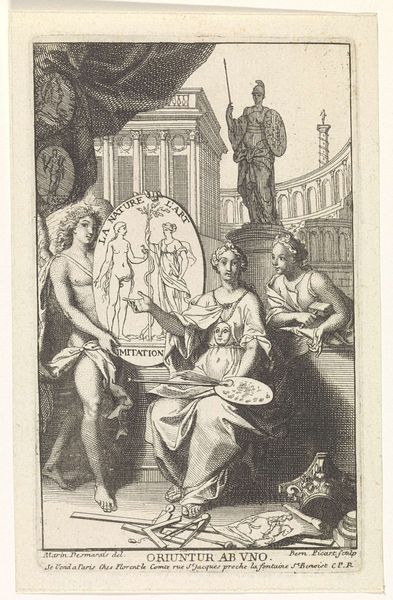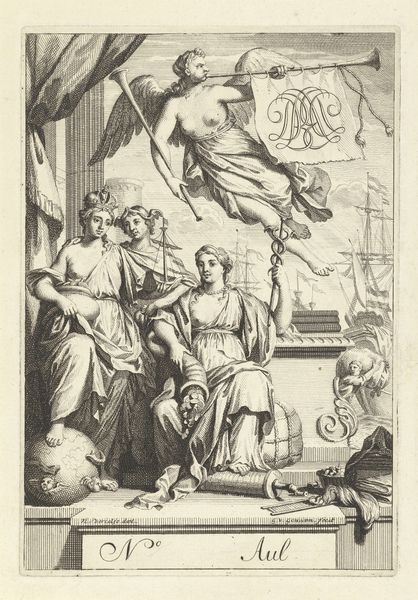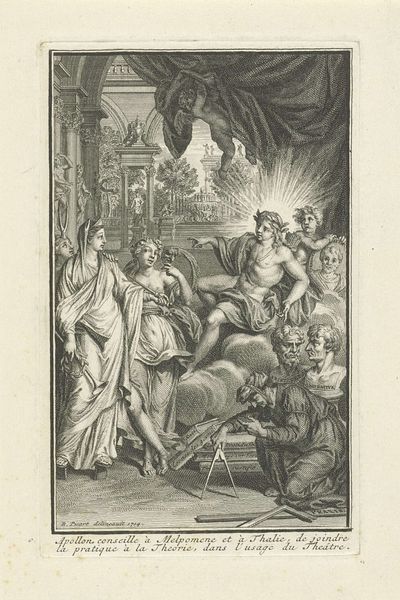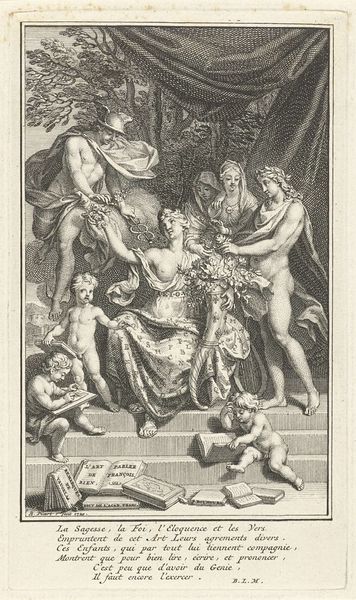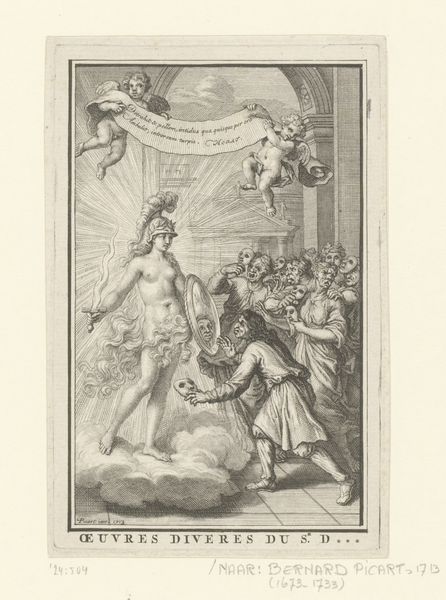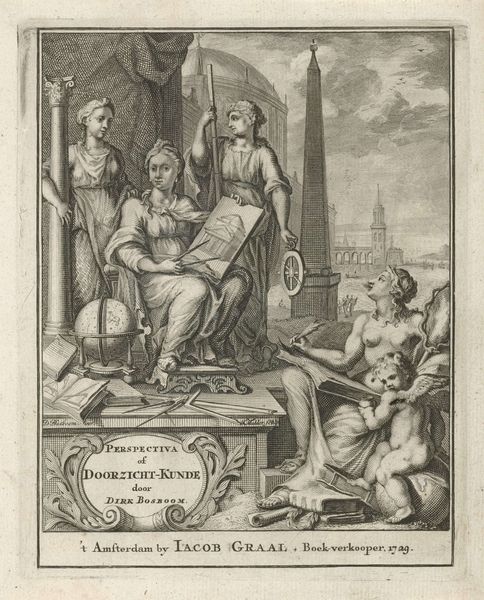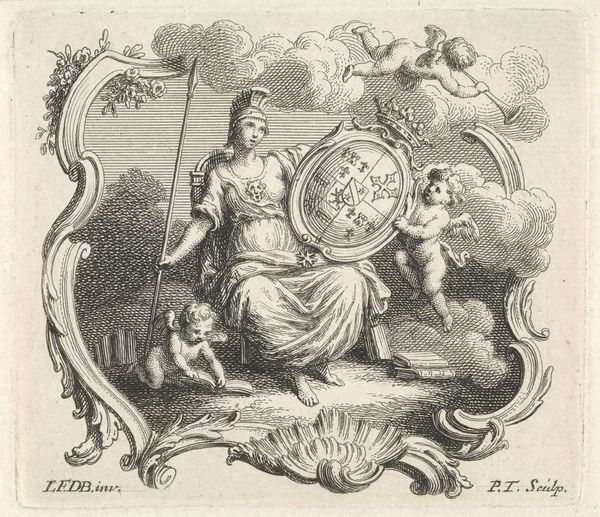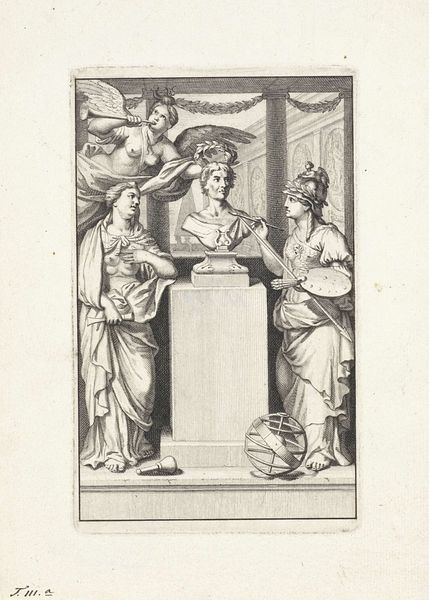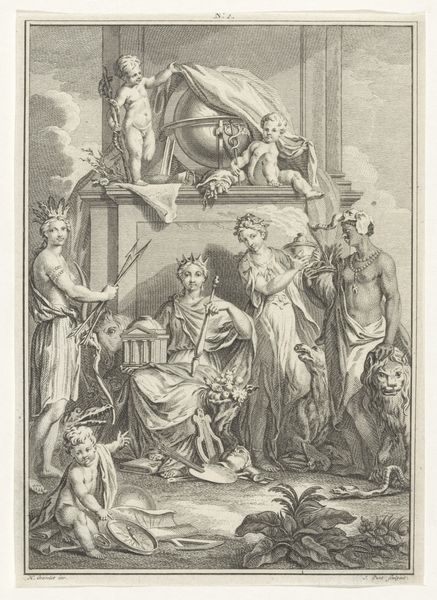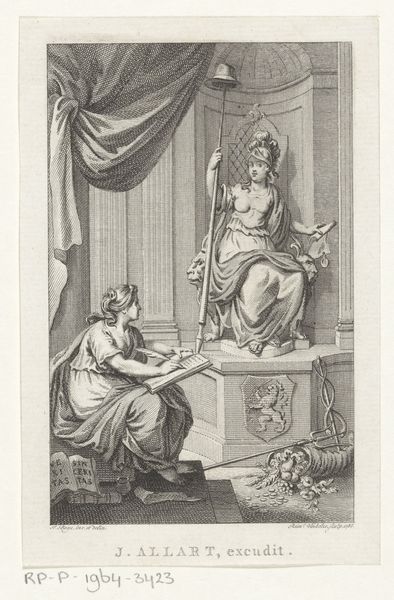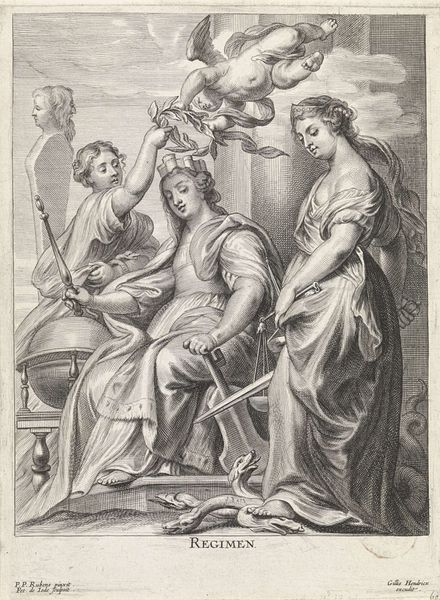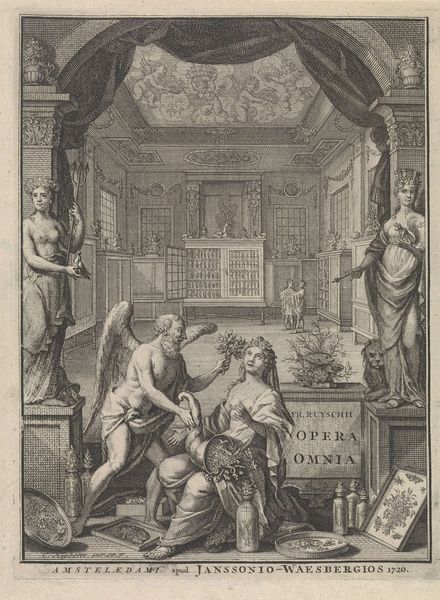
print, engraving
#
allegory
#
baroque
# print
#
old engraving style
#
classical-realism
#
figuration
#
history-painting
#
nude
#
engraving
Dimensions: height 130 mm, width 89 mm
Copyright: Rijks Museum: Open Domain
Curator: Here we have Bernard Picart's "Offer aan Aesculapius," an engraving from 1712, currently residing in the Rijksmuseum. It's striking, isn't it? Editor: Yes, my first impression is one of stillness. Despite the classical figures and the implied action of sacrifice, there’s a frozen, almost dreamlike quality to the scene. The stark black and white intensifies this sense of suspended animation. Curator: I find it fascinating to consider Picart’s labor. Look at the lines – each carefully etched into the metal plate, building up the image layer by layer. It speaks to the tradition of printmaking, the skill of the artisan translating ideas into reproducible form. Consider, too, who this "M. Masson" was, whose cabinet of curiosities this print documents – was he patron, collector, collaborator? This engraving serves both aesthetic and documentary functions, pointing to a culture of consumption around collecting and intellectual pursuits. Editor: And I am struck by the central figure of Aesculapius himself, the god of healing. He’s depicted in a languid pose, drawing attention to the lyre placed strategically behind him. This deliberate gesture connects him not just with healing but with Apollo, underscoring the significance of music and harmony. He's juxtaposed with the snake twined around the column - a potent symbol that is simultaneously dangerous and curative. This dichotomy between poison and medicine is deeply intriguing. Curator: Absolutely, it reminds us that these images are laden with cultural baggage. But looking closer, how does this object itself—as an engraving intended for wide dissemination—challenge traditional understandings of unique authorship? Was Picart working collaboratively, perhaps reinterpreting an older source or responding to specific client demands? Editor: That's a compelling point, about audience, given the era of exploration and heightened interest in classical antiquity. And speaking of audience, did they pick up on all these nuanced symbols? The woman draped in simple clothing touching the serpent with an expressionless face is a symbol of devotion. How many people instantly understood the connections that Picart so artfully depicted? The work serves as both a medical advertisement and historical-cultural statement. Curator: This focus on production and reception unveils some tension: is art an elitist display of mastery or tool for communicating information to broader social groups? The object challenges these boundaries. Editor: Considering its dual roles, from material origins to the intricate web of symbols, has truly reshaped how I experience this work. Curator: Indeed. Reflecting on labor and audience has brought this seemingly distant scene closer to our present-day realities.
Comments
No comments
Be the first to comment and join the conversation on the ultimate creative platform.
